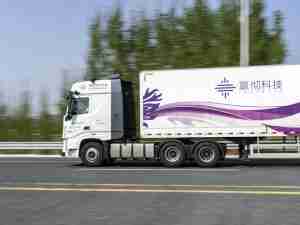The transportation industry plays an essential role in the U.S. economy and its infrastructure. With the demand for transported goods and materials constantly increasing, trucking organizations are tasked with making deliveries nationwide on tighter deadlines and against a growing number of competitors, putting a strain on organizations focused on operating safely and responsibly.
The increased pressure on daily operations requires more commercial vehicles and drivers—despite shortages of both—and, while many fleets have reallocated vehicles, maintaining daily operations remains challenging. Rising costs threaten companies’ bottom lines, and the ever-increasing adoption of technology opens organizations up to a host of unknown risk factors during this time of innovation in the industry.
The opportunities for growth paired with the industry’s evolving concerns create an unprecedented landscape that trucking organizations have to navigate. Planning for the future can seem like a balancing act. But one way for organizations to prepare is to fully understand the industry’s current and future challenges and, more specifically, how these challenges will impact their businesses.
Increased costs
Reducing fleet management costs is crucial for trucking organizations. Rising fuel and equipment costs, employee salaries, and claims and litigation costs mean that organizations need to ensure that each aspect of their business is functioning as efficiently as possible. As suppliers and banks grow more risk-averse, running fleets cost-effectively means prioritizing safety measures to minimize accidents and decrease risk exposure.
Best-in-class trucking operations continuously focus on overall safety, specifically while operating trucks on the road. Road conditions, weather, driver shortages, and just-in-time delivery requirements all impact the business, but safely operating the vehicle should be a trucking organization’s primary focus.
Insurance and claims can be among the top costs for a trucking organization. Recent innovations and investments in operational procedures, such as electronic logs, drive cams, and collision avoidance technology, have created awareness of driver behavior and management.
Additionally, cloud-based systems provide real-time operational insights, thereby streamlining fleet management and saving time and money. This enables fleets to be more efficiently and proactively run, ensuring a more cost-effective approach to fleet management.
U.S. Driver Shortage and Lack of Skilled Drivers
The American Trucking Association recently predicted that the truck driver shortage could potentially reach 160,000 drivers by 2030. The industry also needs to recruit nearly 1,000,000 new drivers over the next decade to compensate for an aging and retiring workforce, combat voluntary and involuntary quitting, and support industry development.
Inexperienced drivers on the road have the potential to increase the opportunity for catastrophic claims and, generally, the exposure of organizations to more frequent, severe claims.
Long-term solutions will likely need to address increased pay, regulatory changes, and modifications to the business practices of shippers, receivers, and carriers. This means investing in programs that attract younger people to the profession and providing them with a path to a career. Organizations also need to invest in technology and tools that empower drivers while also providing training and education programs that will attract the workforce of the next generation to careers in the transportation industry.
Regardless of the strategy, trucking companies are responsible for providing their employees with proper training and making sure safety protocols are in place. They need to use the available technology and data to continuously evaluate and develop these practices so that drivers, warehouse workers, and the public are protected.
AI is a Critical Component of the Future of Trucking
Artificial intelligence is driving the evolution of claims and risk management in the transportation industry. Risk managers should fully invest themselves in understanding how the metrics produced by the technologies in the truck are predictive and can help analyze and prevent accidents from occurring. For example, if a risk manager sees that a driver continually speeds, frequently breaks hard, and erratically changes lanes, the manager can proactively intervene before a serious accident occurs.
With immediate access to this critical claims and risk information, organizations can prepare for adverse events ahead of time and, better yet, prevent them from happening in the first place. Technology is creating safer, faster, and smarter transportation practices and empowering businesses to evolve quickly.
Many transportation organizations are still figuring out how to handle information technology systems and the insights they provide. Often, the cost of implementing modern technology and the logistics of implementing it during everyday operations present a challenge for companies of all sizes. Organizations then also need to be equipped to handle the influx of electronic data (for both storage and claims purposes), potential technological problems or defects, and the implementation of cybersecurity.
Vulnerabilities in technology and data security pose a significant threat to any industry, but for transportation, as a critical piece of the supply chain, a cyber-based vulnerability could be devastating for operations and the economy at large. The “usual” security concerns—sensitive data, such as inventory and customer information, employee records, and banking information—make trucking companies a target, and with the rapidly changing tech landscape within the transportation industry, protecting this information becomes even more critical.
Preparing for the Future
Trucking companies should continuously review their operations and make any necessary changes as their needs and the needs of their customers change. The transportation industry is poised for significant change in the coming years as new technologies and dynamic regulatory landscapes continue to reshape day-to-day business operations. Trucking organizations should prioritize risk mitigation strategies and preventative safety measures to help control costs and reduce the risk of incidents on the road. If challenges within the industry necessitate reducing the time it takes to obtain a license in order to attract new talent and meet driver demand, trucking organizations should review and perhaps re-prioritize their training methodologies to mitigate future exposure. In the face of so many challenges, choosing the right claims and risk management partner is essential to continuing the positive growth and success of organizations in the future.
Advanced claims and risk management solutions that drive safety improvements and limit risk exposures will keep the transportation industry moving.
About the authors
Doug Betkowski is Gallagher Bassett’s Senior Vice President, Transportation Practice Major Case Unit (MCU). With over 40 years of industry experience, he strengthens GB’s ability to focus on clients’ most severe, complex, and high-exposure transportation claims. Doug has served on the Transportation Industry Defense Association Board of Directors, the Themis Advocates Group Client Advisory Board, the ALFA Transportation Practice Group Client Advisory Board, and as a client advisor of US LAW’s Transportation & Logistics Practice Group. His experience with these groups has provided him with deep insights and oversight of the industry.
Lori Ilgenfritz is Director, Client Services at Gallagher Bassett. In addition to claims management, she is responsible for leading the GB Transportation Practice Area workers’ compensation efforts. Lori joined Gallagher Bassett in March of 2019. Previously, she was at YRC Worldwide for 35 years in operations and risk management. Lori holds a business administration undergraduate degree from Millersville University in Pennsylvania.






